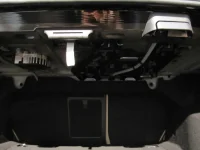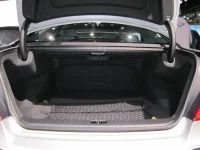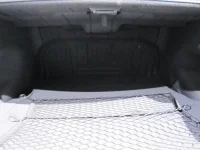Some have more features and technology. For instance, MB and BMW have had microwave (radar) cruise control for years while Toyota and others had the vastly inferior IR laser based systems. BMW and Audi have virtually all direct injected engines. BMW was first with variable valve lift from varying the rocker fulcrum, which let them eliminated the throttle. BMW has typically done a better job with shocks, but not really better than Bilstein replacements (which are not available for the Genesis).
The Europeans used unit body construction when body on frame still dominated in the US. Without speed limits, German cars (and only German cars) of the 50s, 60s, 70s, and 80s typically had stiffer chassis, more fade resistant brakes, engines that could run under heavy load and high engine speeds, and a high degree of directional stability when other cars didn't. Japanese cars, where speeds where slow and roads were narrow generally were weak in these areas.
Because of taxes the European cars had smaller displacement engines, which needed a higher state of tune to produce adequate power. The smaller displacement and higher state of tune resulted in a power curve soft on the bottom. By comparison, US engines had a fake HP war and usually operated at a fraction of their peak engine speeds. With no displacement tax and much lower fuel taxes, efficiency and displacement weren't issues so they became huge displacement engines in low states of tune.
Cadillac had a 472cu.in. engine (nearly 8 liters) that would probably be around 220hp by current measurements.
The directional stability in the German cars in particular (but really all European cars) often came with a large amount of positive caster. The American cars of the time came with little or even positive caster to make them easier to steer (power steering was an option and the cars where heavy and nose heavy). The US manufacturers resisted disc brakes because they needed power assist, drums have a servo-assist (as do wedge brakes).
Because they were more expensive relative to incomes they also tended to use better materials for rubber bushings and gaskets. However, they were still rubber (on a Rolls they were steel).
Emission laws made everyone make engines that lasted over 100k miles. Fuel economy laws and consumer demands also affected design. Crash testing laws and safety equipment improved chassis. Nearly every new model even today is has a stiffer and lighter chassis than its predecessor as the result of designs on newer software and improved manufacturing processes. For example light truck chassis used to be made from extruded steel C sections. They are now made from hydroformed box sections.
Net: there are a few differences, but they are mainly the result of the vehicle price points, engineering staff capabilities, and marketing decisions. For example, BMW, which also adheres to straight 6s, usually has the smoothest engines.










